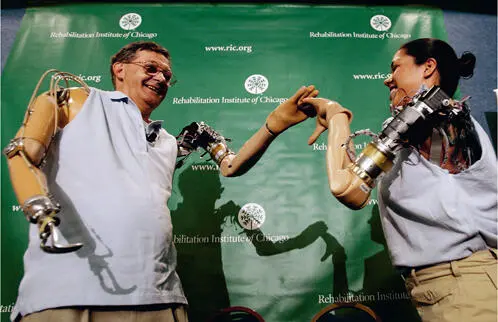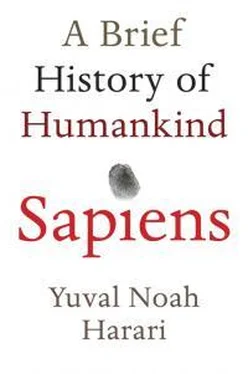True, we still don’t have the acumen to achieve this, but there seems to be no insurmountable technical barrier preventing us from producing superhumans. The main obstacles are the ethical and political objections that have slowed down research on humans. And no matter how convincing the ethical arguments may be, it is hard to see how they can hold back the next step for long, especially if what is at stake is the possibility of prolonging human life indefinitely, conquering incurable diseases, and upgrading our cognitive and emotional abilities.
What would happen, for example, if we developed a cure for Alzheimer’s disease that, as a side benefit, could dramatically improve the memories of healthy people? Would anyone be able to halt the relevant research? And when the cure is developed, could any law enforcement agency limit it to Alzheimer’s patients and prevent healthy people from using it to acquire super-memories?
It’s unclear whether bioengineering could really resurrect the Neanderthals, but it would very likely bring down the curtain on Homo sapiens . Tinkering with our genes won’t necessarily kill us. But we might fiddle with Homo sapiens to such an extent that we would no longer be Homo sapiens .
Bionic Life
There is another new technology which could change the laws of life: cyborg engineering. Cyborgs are beings which combine organic and inorganic parts, such as a human with bionic hands. In a sense, nearly all of us are bionic these days, since our natural senses and functions are supplemented by devices such as eyeglasses, pacemakers, orthotics, and even computers and mobile phones (which relieve our brains of some of their data storage and processing burdens). We stand poised on the brink of becoming true cyborgs, of having inorganic features that are inseparable from our bodies, features that modify our abilities, desires, personalities and identities.
The Defense Advanced Research Projects Agency (DARPA), a US military research agency, is developing cyborgs out of insects. The idea is to implant electronic chips, detectors and processors in the body of a fly or cockroach, which will enable either a human or an automatic operator to control the insect’s movements remotely and to absorb and transmit information. Such a fly could be sitting on the wall at enemy headquarters, eavesdrop on the most secret conversations, and if it isn’t caught first by a spider, could inform us exactly what the enemy is planning. 12In 2006 the US Naval Undersea Warfare Center reported its intention to develop cyborg sharks, declaring, ‘NUWC is developing a fish tag whose goal is behaviour control of host animals via neural implants.’ The developers hope to identify underwater electromagnetic fields made by submarines and mines, by exploiting the natural magnetic detecting capabilities of sharks, which are superior to those of any man-made detectors. 13
Sapiens, too, are being turned into cyborgs. The newest generation of hearing aids are sometimes referred to as ‘bionic ears’. The device consists of an implant that absorbs sound through a microphone located in the outer part of the ear. The implant filters the sounds, identifies human voices, and translates them into electric signals that are sent directly to the central auditory nerve and from there to the brain. 14
Retina Implant, a government-sponsored German company, is developing a retinal prosthesis that may allow blind people to gain partial vision. It involves implanting a small microchip inside the patient’s eye. Photocells absorb light falling on the eye and transform it into electrical energy, which stimulates the intact nerve cells in the retina. The nervous impulses from these cells stimulate the brain, where they are translated into sight. At present the technology allows patients to orientate themselves in space, identify letters, and even recognise faces. 15
Jesse Sullivan, an American electrician, lost both arms up to the shoulder in a 2001 accident. Today he uses two bionic arms, courtesy of the Rehabilitation Institute of Chicago. The special feature of Jesse’s new arms is that they are operated by thought alone. Neural signals arriving from Jesse’s brain are translated by micro-computers into electrical commands, and the arms move. When Jesse wants to raise his arm, he does what any normal person unconsciously does – and the arm rises. These arms can perform a much more limited range of movements than organic arms, but they enable Jesse to carry out simple daily functions. A similar bionic arm has recently been outfitted for Claudia Mitchell, an American soldier who lost her arm in a motorcycle accident. Scientists believe that we will soon have bionic arms that will not only move when willed to move, but will also be able to transmit signals back to the brain, thereby enabling amputees to regain even the sensation of touch! 16

47. Jesse Sullivan and Claudia Mitchell holding hands. The amazing thing about their bionic arms is that they are operated by thought.
At present these bionic arms are a poor replacement for our organic originals, but they have the potential for unlimited development. Bionic arms, for example, can be made far more powerful than their organic kin, making even a boxing champion feel like a weakling. Moreover, bionic arms have the advantage that they can be replaced every few years, or detached from the body and operated at a distance.
Scientists at Duke University in North Carolina have recently demonstrated this with rhesus monkeys whose brains have been implanted with electrodes. The electrodes gather signals from the brain and transmit them to external devices. The monkeys have been trained to control detached bionic arms and legs through thought alone. One monkey, named Aurora, learned to thought-control a detached bionic arm while simultaneously moving her two organic arms. Like some Hindu goddess, Aurora now has three arms, and her arms can be located in different rooms – or even cities. She can sit in her North Carolina lab, scratch her back with one hand, scratch her head with a second hand, and simultaneously steal a banana in New York (although the ability to eat a purloined fruit at a distance remains a dream). Another rhesus monkey, Idoya, won world fame in 2008 when she thought-controlled a pair of bionic legs in Kyoto, Japan, from her North Carolina chair. The legs were twenty times Idoya’s weight. 17
Locked-in syndrome is a condition in which a person loses all or nearly all her ability to move any part of her body, while her cognitive abilities remain intact. Patients suffering from the syndrome have up till now been able to communicate with the outside world only through small eye movements. However, a few patients have had brain-signal-gathering electrodes implanted in their brains. Efforts are being made to translate such signals not merely into movements but also into words. If the experiments succeed, locked-in patients could finally speak directly with the outside world, and we might eventually be able to use the technology to read other peoples minds. 18
Yet of all the projects currently under development, the most revolutionary is the attempt to devise a direct two-way brain-computer interface that will allow computers to read the electrical signals of a human brain, simultaneously transmitting signals that the brain can read in turn. What if such interfaces are used to directly link a brain to the Internet, or to directly link several brains to each other, thereby creating a sort of Inter-brain-net? What might happen to human memory, human consciousness and human identity if the brain has direct access to a collective memory bank? In such a situation, one cyborg could, for example, retrieve the memories of another – not hear about them, not read about them in an autobiography, not imagine them, but directly remember them as if they were his own. Or her own. What happens to concepts such as the self and gender identity when minds become collective? How could you know thyself or follow your dream if the dream is not in your mind but in some collective reservoir of aspirations?
Читать дальше




![Юваль Ной Харари - Sapiens. Краткая история человечества [litres]](/books/34310/yuval-noj-harari-sapiens-kratkaya-istoriya-cheloveche-thumb.webp)





![Юваль Ной Харари - 21 урок для XXI века [Версия с комментированными отличиями перевода]](/books/412481/yuval-noj-harari-21-urok-dlya-xxi-veka-versiya-s-ko-thumb.webp)


